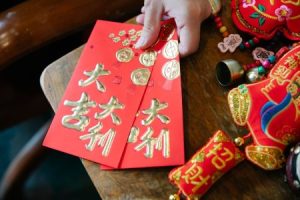**Abstract:** Discover how feng shui ornaments can significantly influence your mood and well-being. This article explores the science behind these decorative items and their psychological effects.
The Psychological Impact of Feng Shui Ornaments
Feng shui, an ancient Chinese practice, emphasizes the arrangement of space to enhance energy flow, or “chi.” Ornaments play a crucial role in this practice. They are not merely decorative items; they serve as conduits for energy that can profoundly affect our emotional and psychological states. By understanding how these ornaments work, individuals can create environments that foster positivity, calmness, and productivity.
Feng shui ornaments, such as crystals, wind chimes, and figurines, can evoke specific emotions and energies. For example, placing a crystal in your workspace may enhance clarity and focus, while a calming wind chime can reduce stress and promote relaxation. This interplay between physical space and emotional well-being illustrates the powerful influence of feng shui on our daily lives.
The Science of Color and Shape
Color and shape are vital components in feng shui ornaments. Different colors evoke different emotional responses. For instance, blue is often associated with tranquility and calmness, making it an excellent choice for bedrooms or meditation spaces. On the other hand, red symbolizes energy and passion, which can invigorate a space but may not be suitable for areas meant for rest.
Shapes also carry significance. Rounded shapes promote harmony and balance, while sharp angles can create tension and unease. The careful selection of colors and shapes in feng shui ornaments can help you curate an environment that aligns with your emotional needs, enhancing your overall well-being.
<strong.The Role of Intent and Placement
The power of feng shui ornaments is not just in their physical attributes but also in the intent behind their placement. When you consciously choose where to position these items, you are actively engaging with the energy of your space. For example, placing a small statue of a guardian figure at your front door can create a sense of protection and security.
Moreover, the concept of “command position” in feng shui suggests that key furniture pieces should face the entrance of a room. This placement allows for a sense of control and awareness of one’s surroundings. By thoughtfully arranging your ornaments in accordance with feng shui principles, you can cultivate a space that nurtures your emotional health.
<strong.Case Studies: Real-Life Transformations
Numerous individuals have experienced transformations in their lives by integrating feng shui ornaments into their environments. For instance, a woman struggling with anxiety placed a calming jade plant in her living room, which helped her feel more grounded and at peace. Another individual reported increased productivity after introducing a crystal-clear quartz to his office space, which he felt enhanced his focus and creativity.
These anecdotal examples highlight the practical applications of feng shui in everyday life. When individuals are intentional about the ornaments they choose and their placements, they often find themselves experiencing positive shifts in their mood and overall quality of life.
<strong.Conclusion: Harnessing Energy for Well-Being
Feng shui ornaments are more than just decorative pieces; they are powerful tools for enhancing our emotional and psychological well-being. By understanding the science behind these ornaments, including the impact of color, shape, and intentional placement, individuals can create spaces that resonate with positive energy. This awareness not only improves mood but also fosters a greater sense of harmony and balance in our lives. Embrace the potential of feng shui ornaments, and transform your space into a sanctuary of positivity and well-being.










